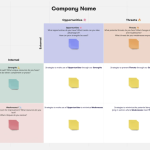Every business is based on assumptions – about your product, your market, your team, your customers, and more. Some of these assumptions are riskier than others, and it’s important to identify which ones are most likely to trip you up. Here’s how to do it.” Every business is based on assumptions. Whether you’re a startup or an established company, you’re making assumptions about your product, your market, your team, your customers, and more. Some of these assumptions are riskier than others.
What are business assumptions?

An assumption is a belief that something is true. In business, we make assumptions all the time. For example, when you launch a new product, you’re assuming that people will want to buy it. When you start a new business, you’re assuming that you can find customers and make enough sales to be profitable.
These are just a few examples, but you can see how business assumptions can be very important. If your assumption is wrong, it could have serious consequences for your business. That’s why it’s so important to identify and mitigate your riskiest business assumptions.
How to identify your riskiest business assumptions
There are a few different ways to identify your riskiest business assumptions:
- Look at which areas of your business are most uncertain.
- Look at which areas of your business could have the biggest impact if things go wrong.
- Ask your team, investors, and customers for their input.
Know your business model
The first step to identifying your riskiest business assumptions is to take a close look at your business model. What are the key components of your business? What are you selling? Who are your customers? How do you make money?
For example, let’s say you’re a startup that’s selling a new product. Your business model is based on the assumption that people will want to buy your product. If this assumption turns out to be wrong, your business could very quickly become unprofitable.
Know your industry
Another important step in identifying your riskiest business assumptions is to understand your industry. What are the trends? What are the biggest challenges? What do experts expect to happen in the future?
By understanding your industry, you can start to identify which of your business assumptions are most likely to be wrong. For example, let’s say you’re in the business of selling products online. One of your assumptions is that people will continue to buy products online. However, if there’s a recession and people start buying less stuff overall, your business could be in trouble.
Know your customers
Finally, it’s important to understand your customers. Who are they? What do they want? What do they need? How likely are they to buy your product or use your service?
One of your assumptions is that people will understand how to use it. However, if your customers don’t understand how to use it, they’re not going to buy it.
How to mitigate business assumptions
Once you’ve identified your riskiest business assumptions, it’s time to start mitigating the risks. There are a few different ways to do this:
- Do some research to try to validate your assumption.
- Build flexibility into your plans so that you can adapt if things don’t go as expected.
- Put together a contingency plan for what you’ll do if your assumption turns out to be wrong.
By taking the time to identify and mitigate your riskiest business assumptions, you can help your business avoid some major problems down the road.
Riskiest Assumption Test (RAT)
Once you’ve identified your riskiest business assumptions, you can use the Riskiest Assumption Test (RAT) to help you mitigate the risks.
The RAT is a simple three-step process:
- Step One: Identify your assumption.
- Step Two: What is the worst thing that could happen if your assumption is wrong?
- Step Three: What can you do to reduce the likelihood of the worst thing happening?
Conclusion
Every business is based on assumptions. Some of these assumptions are riskier than others. It’s important to identify your riskiest business assumptions and take steps to mitigate the risks. You can do this by doing some research, building flexibility into your plans, and putting together a contingency plan.
Photo by Daniil Komov on Unsplash









